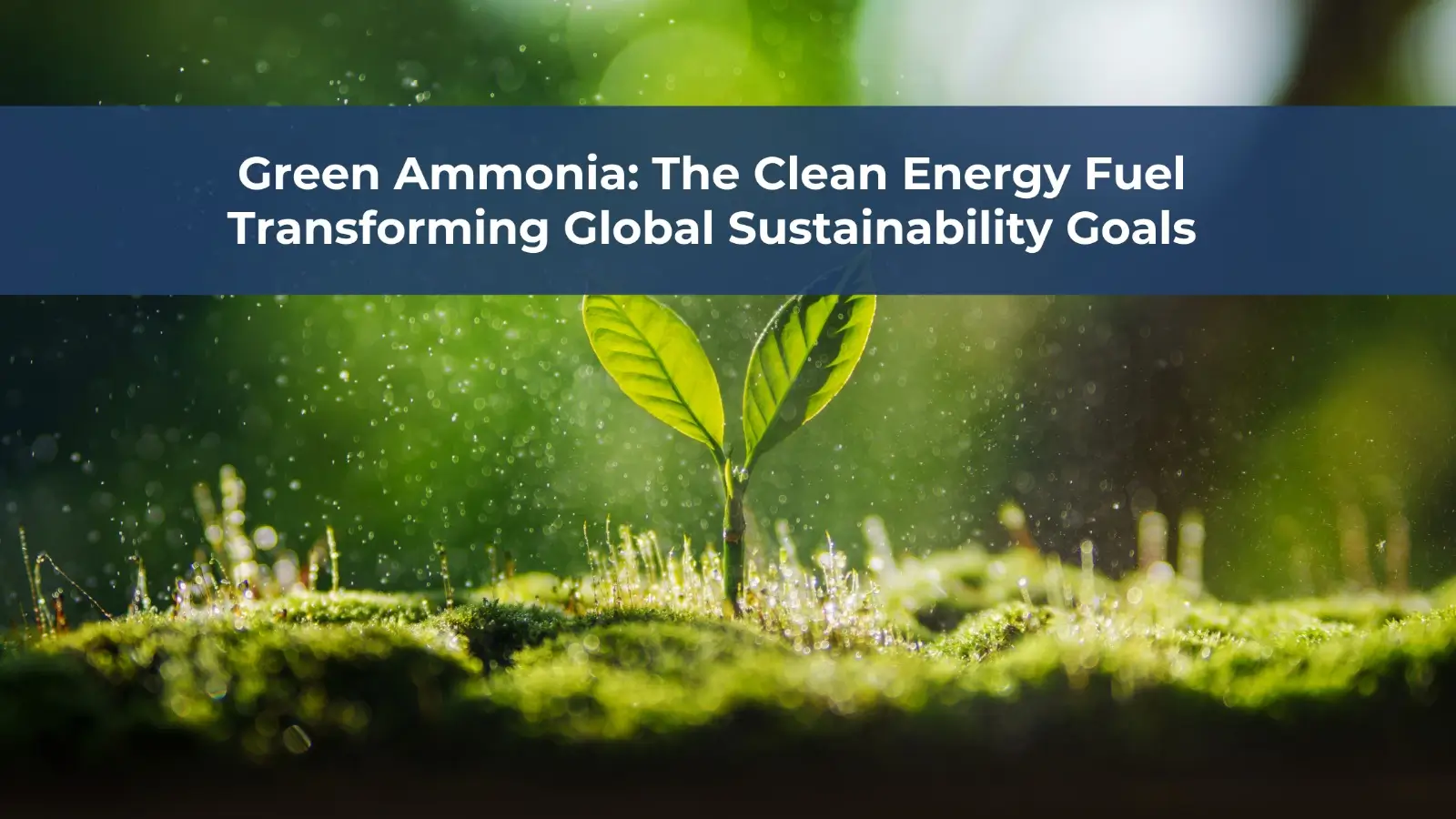As the world races towards net-zero carbon emissions, industries are increasingly looking for cleaner, more sustainable energy alternatives. Green ammonia has emerged as a promising solution—a carbon-free fuel that has the potential to revolutionize sectors like shipping, power generation, and fertilizer production. Unlike traditional ammonia, which is produced using fossil fuels, green ammonia is synthesized using renewable energy sources, making it a key enabler in the global push towards decarbonization.
In this blog, we’ll explore what green ammonia is, its production process, and how it’s poised to reshape the global energy landscape.
What is Green Ammonia?
Green ammonia refers to ammonia (NH₃) that is produced through a sustainable process where hydrogen is derived from water electrolysis powered by renewable energy, such as solar or wind. This eliminates the carbon emissions typically associated with conventional ammonia production, which relies on natural gas or coal.
Given that ammonia is already a major industrial chemical, used extensively in fertilizers, refrigeration, and chemical manufacturing, the transition to green ammonia production could have far-reaching environmental benefits. By replacing fossil fuels with renewable energy in its synthesis, industries can significantly reduce their carbon footprint.
The Green Ammonia Production Process
The conventional method of producing ammonia, known as the Haber-Bosch process, is energy-intensive and responsible for nearly 1% of global CO₂ emissions. In contrast, the green ammonia production process involves two key steps:
- Electrolysis of Water: Renewable energy (solar, wind, or hydropower) is used to split water (H₂O) into hydrogen (H₂) and oxygen (O₂) through electrolysis. This is the most critical step that differentiates green ammonia from its fossil-fuel-derived counterpart.
- Ammonia Synthesis via Haber-Bosch Process: The green hydrogen produced is then combined with nitrogen extracted from the air under high pressure and temperature using the Haber-Bosch process. Since the energy input comes from renewable sources, the entire ammonia production becomes carbon-neutral.
Building a green ammonia plant requires substantial investment in electrolysis units, air separation facilities, and ammonia synthesis loops. However, with advancements in electrolyzer technology and decreasing costs of renewable energy, the economic viability of green ammonia is improving steadily.
Applications of Green Ammonia in a Decarbonized Future
The potential applications of green ammonia go beyond fertilizers and industrial chemicals. Here’s how it’s set to transform global sustainability efforts:
1. Fuel for Power Generation
Green ammonia can be directly used as a fuel in gas turbines or co-fired with coal in existing power plants to reduce carbon emissions. Additionally, it can be cracked back into hydrogen for use in fuel cells, offering flexibility in clean energy generation.
2. Shipping and Marine Fuel
The maritime industry, which accounts for nearly 3% of global greenhouse gas emissions, is aggressively exploring ammonia as a zero-carbon marine fuel. Green ammonia’s high energy density and existing global infrastructure make it a strong candidate for decarbonizing shipping fleets.
3. Hydrogen Carrier and Energy Storage
Transporting and storing hydrogen is challenging due to its low density and high volatility. Green ammonia serves as an effective hydrogen carrier, simplifying logistics and enabling large-scale renewable energy storage.
Challenges in Green Ammonia Adoption
While green ammonia presents an exciting pathway to sustainability, its adoption comes with certain challenges:
- High Production Costs: Currently, the cost of producing green ammonia is higher than conventional methods, primarily due to the capital-intensive nature of electrolyzers and renewable energy dependency.
- Infrastructure Development: Transitioning to green ammonia requires upgrading existing ammonia plants or setting up new facilities designed for renewable energy integration.
- Regulatory Support: Governments and policymakers need to introduce incentives, subsidies, and clear guidelines to accelerate green ammonia projects and encourage investment in this sector.
Despite these challenges, many global players are setting up pilot plants and scaling their green ammonia process capabilities to align with future energy demands.
Green Ammonia Suppliers Leading the Transition
Globally, several companies are investing in green ammonia plants, aiming to supply eco-friendly ammonia to industries transitioning towards sustainability. In India, companies with expertise in ammonia logistics and infrastructure are now exploring green ammonia production to align with national and global decarbonization goals.
As the demand for green ammonia grows, green ammonia suppliers with robust supply chain capabilities, technical know-how, and existing ammonia distribution networks will play a pivotal role in ensuring a smooth transition.
India’s Role in the Green Ammonia Revolution
India’s ambitious renewable energy targets and growing emphasis on green hydrogen put the country in a strong position to become a significant player in the green ammonia market. With abundant solar and wind resources, India can leverage its renewable potential to produce green ammonia at scale, catering not only to domestic industries but also to global markets seeking clean energy alternatives.
Companies like Jaysons Chemical Industries, with decades of expertise in ammonia supply, storage, and transportation, are strategically positioned to diversify into green ammonia production, contributing to India’s clean energy future.
Conclusion
Green ammonia is more than just a buzzword—it’s a transformative energy solution that can significantly impact global sustainability goals. By shifting towards green ammonia production, industries can reduce their carbon emissions while ensuring energy security. Though challenges remain, technological advancements, regulatory support, and growing environmental consciousness are rapidly driving the green ammonia revolution.
As industries worldwide gear up for a carbon-neutral future, green ammonia will undoubtedly play a central role in reshaping how energy is produced, stored, and consumed.














